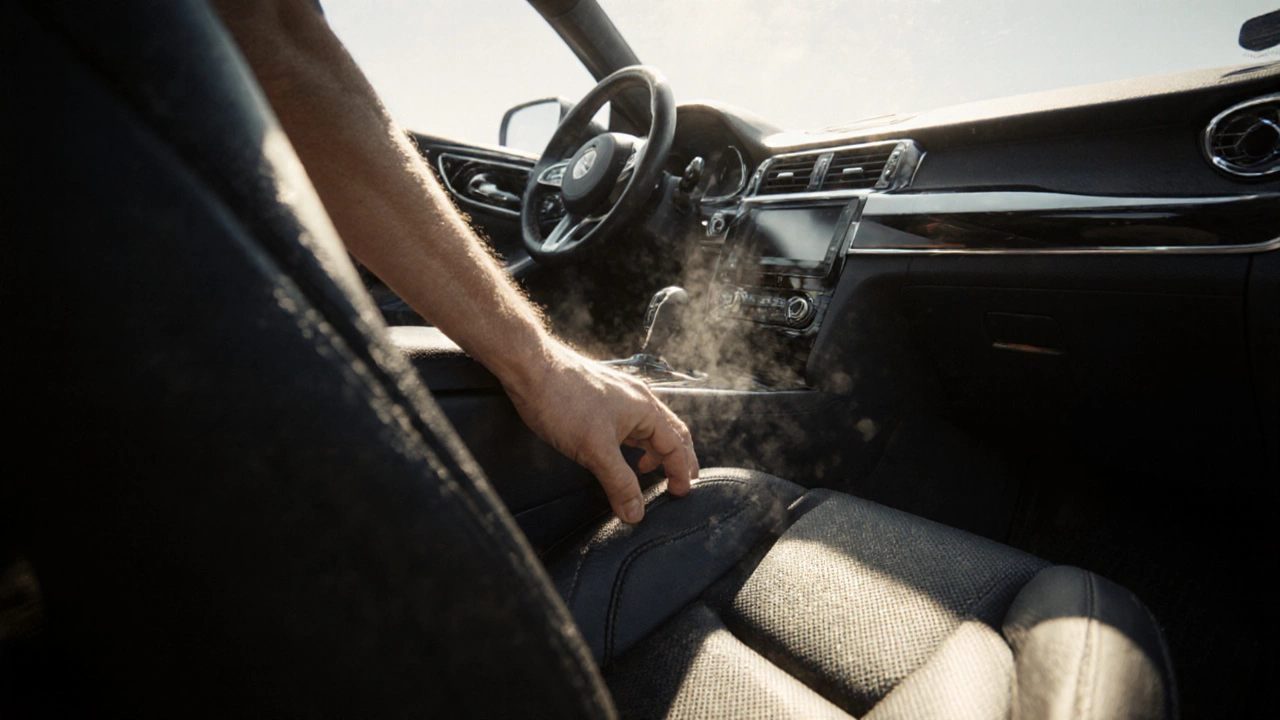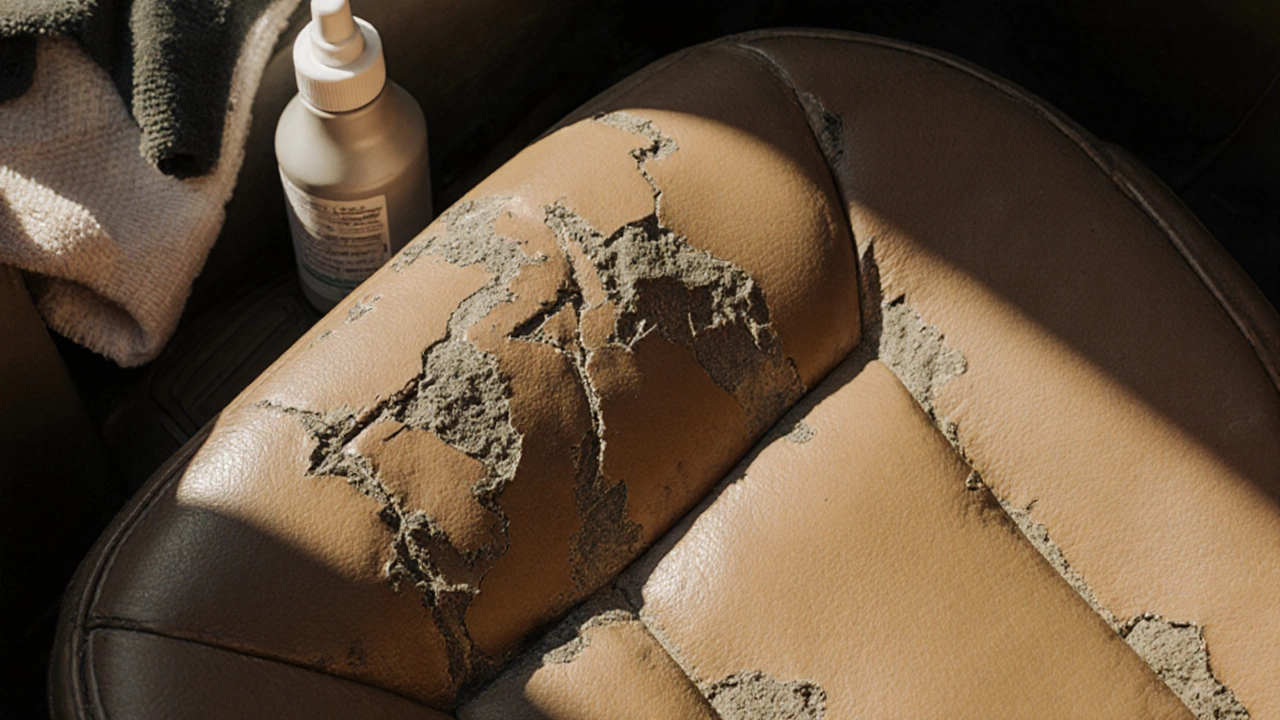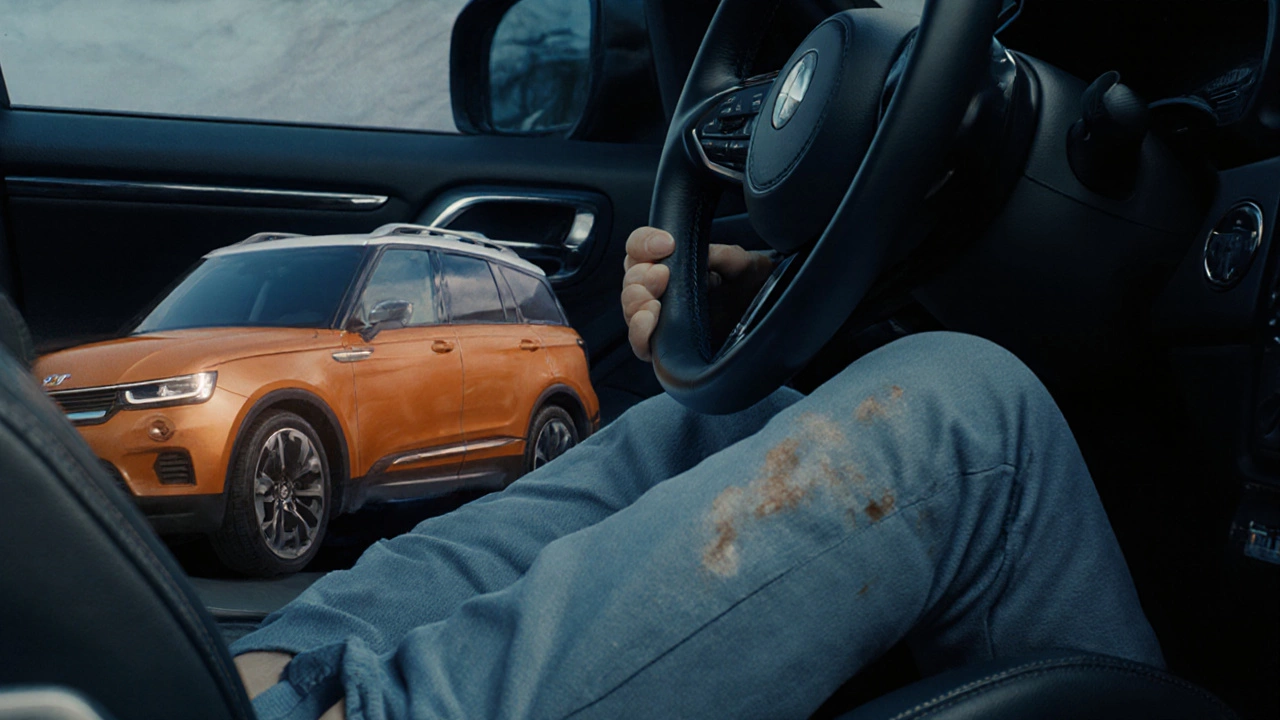What Is the Downside of Leather Car Seats? Real Problems You Might Not Expect
 Oct, 28 2025
Oct, 28 2025
Leather Car Seat Cost Calculator
Your Usage Profile
Key Considerations
Hidden Costs: Leather seats require ongoing maintenance and repairs that cloth seats don't. The article highlights issues like cracking, chemical smells, and high replacement costs.
Real Cost: Leather seats can cost 3-5x more to replace than cloth seats and require monthly upkeep.
Leather car seats look expensive. They feel smooth. They’re often the default upgrade when you buy a new car. But here’s the truth most salespeople won’t tell you: leather seats come with real, everyday problems that can turn a luxury feature into a headache.
They Get Extremely Hot in Summer
Black leather in direct sunlight? That’s not a seat-it’s a griddle. On a 30°C day in Birmingham, your leather seats can hit 60°C or more. I’ve seen people sit down and immediately jump back up, swearing under their breath. Cloth seats? They stay close to air temperature. Leather doesn’t breathe. It traps heat like a blanket. If you wear dark pants or have sensitive skin, you’re not just uncomfortable-you’re at risk of burns. Air conditioning helps, but it takes minutes to cool down. That’s minutes of discomfort every single summer day.
They Crack and Peel Over Time
Leather isn’t indestructible. It dries out. It fades. It cracks. Especially if it’s not properly conditioned. I’ve seen seats in 5-year-old cars that looked like they’d been through a sandstorm. The cracks start small-fine lines near the edge of the seat or along the seam. Then they grow. They look cheap. And they’re expensive to fix. Reconditioning leather costs £150-£300 per seat. Replacing them? That’s £800-£2,000 depending on the car. Cloth doesn’t crack. It might stain, but it doesn’t fall apart like this.
Maintenance Is a Constant Chore
Leather needs care. Regularly. Every 3-6 months, you need to clean it with a pH-balanced cleaner, then condition it with a quality leather oil. Skip it for a year? The material starts to stiffen. Dust and dirt get trapped in the pores. Sweat from your clothes? It leaves stains you can’t scrub out. Salt from winter boots? It eats away at the finish. Cloth seats? Vacuum them once a month. That’s it. Leather? You’re signing up for a monthly ritual. And if you forget? The damage isn’t reversible.
They’re Hard to Clean After Spills
Spill coffee? Ketchup? Baby food? On cloth, you blot, rinse, and it’s mostly gone. On leather? It soaks in. The dye stains permanently. Even if you clean it right away, the color changes. You can’t bleach leather. You can’t scrub hard. And if you use the wrong cleaner, you ruin the surface. I know someone who tried to clean red wine off their leather seats with vinegar. The leather turned white in patches. Repair? £600. That’s the cost of a decent set of cloth seats.

They Slip When You’re Driving
Leather is smooth. Really smooth. On long drives, especially when you’re wearing synthetic fabrics, your body slides. You shift left. You shift right. You adjust constantly. It’s distracting. It’s tiring. Cloth seats have texture. They grip your clothes. They hold you in place. In a performance car, that grip matters. In a daily driver, it just makes driving less stressful. I used to drive a leather-seated sedan. I bought a cloth-seat SUV for weekend trips. The difference in comfort was instant.
They Smell Like Chemicals (And Never Fully Go Away)
New leather smells like plastic and solvents. That’s not luxury-that’s off-gassing. The chemicals used to treat leather can linger for months. People with asthma or chemical sensitivities report headaches, nausea, and breathing issues. Even after the smell fades, the residue stays. It’s not just odor-it’s airborne particles. Cloth seats? They smell like fabric. Sometimes like laundry detergent. That’s it.
They’re More Expensive to Replace
If your car gets totaled, or you need new seats after an accident, leather costs more. Insurance companies know this. Replacement leather seats can be 3-5 times pricier than cloth. Even if you’re not replacing the whole seat, getting a matching leather panel repaired? That’s a custom job. Few shops do it well. And when they do, the color never matches perfectly. You end up with a seat that looks patched, not restored.

They Don’t Work Well in Cold Weather
Leather freezes. It gets stiff. It feels like sitting on ice. You need to run the heater for minutes before it’s even tolerable. Cloth warms up faster because it holds heat better. In winter, I’ve seen people in leather-seated cars sit there with coats on, waiting for the seat to thaw out. It’s not just uncomfortable-it’s inefficient. You’re burning fuel to warm up a material that doesn’t hold warmth well.
They Attract Pet Hair and Dust
Leather looks clean when it’s new. But pet hair? It sticks like glue. And it’s hard to remove. You can’t just vacuum it off. You need a damp cloth, a rubber glove, or a special leather brush. Dust? It settles into the grain and looks like dirt. Cloth hides pet hair better. It’s woven, so hair doesn’t cling as tightly. If you have dogs or cats, leather seats become a daily cleaning project.
They Reduce Resale Value in Some Markets
Here’s the twist: not everyone wants leather. In Europe, especially in cities like Birmingham, many buyers prefer cloth. Why? They know the downsides. They’ve seen the cracks. They’ve felt the heat. In the used car market, a car with leather seats can actually sell slower than one with cloth-unless it’s a luxury brand. For mainstream cars, leather is seen as a liability, not a perk. You might pay more upfront, but you’ll get less back when you sell.
So, Is Leather Worth It?
Leather isn’t bad. It’s just not what it’s sold as. It’s not low-maintenance. It’s not durable. It’s not comfortable in all seasons. It’s a status symbol with hidden costs. If you live in a hot climate, have kids or pets, or hate cleaning, skip it. If you drive a sports car and want that premium look, fine-but know what you’re signing up for. For most people, high-quality cloth seats with good padding, stain resistance, and easy cleaning are the smarter choice. They last longer. They cost less. And they don’t make you regret your decision every summer.